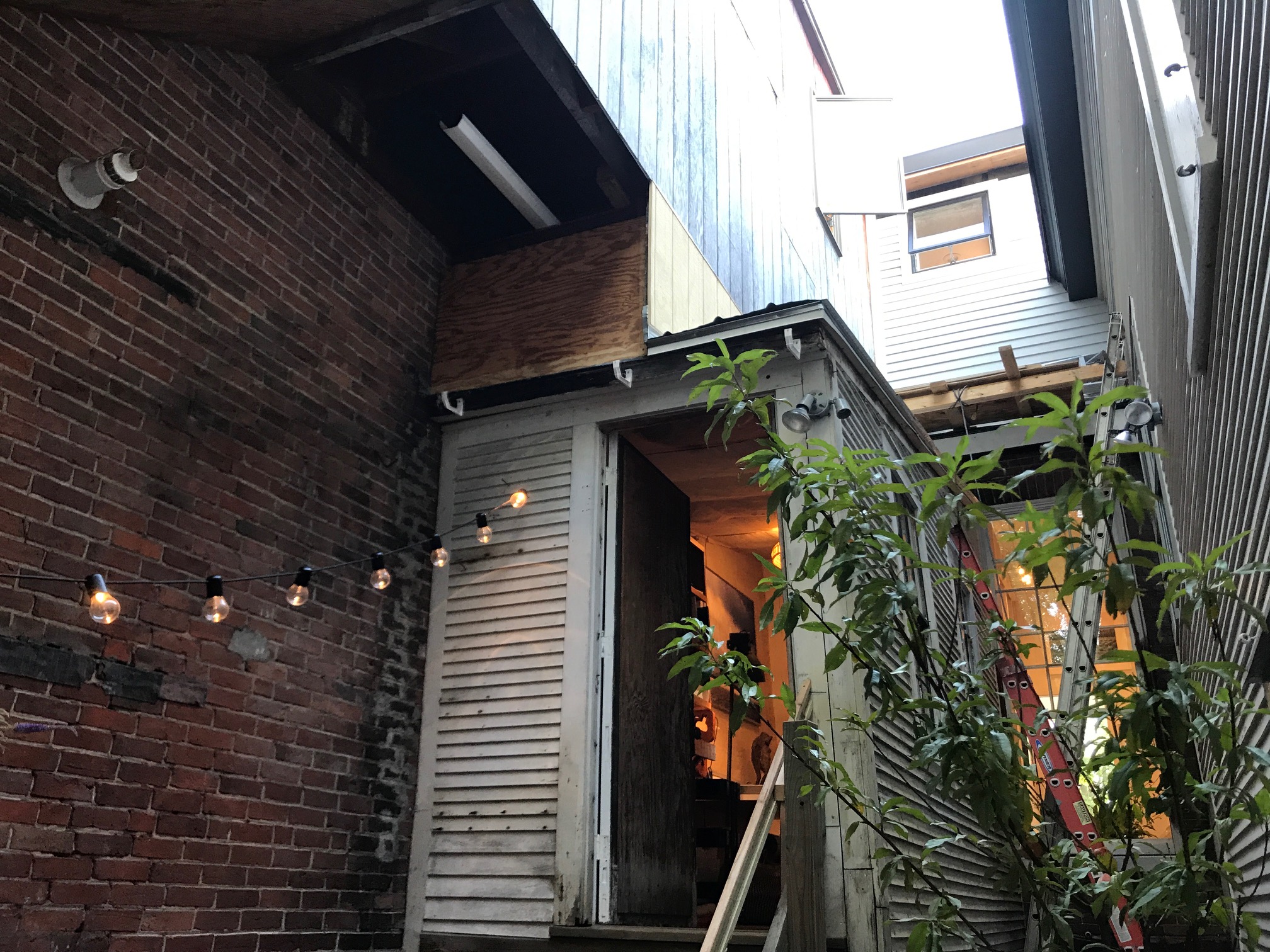This summer and fall I have noticed circles everywhere I turn...the moon, ripe tomatoes on the vine, white round blooms of Queen Anne's lace, and shining red apples ready to pick from our old orchard trees. I have also noticed circles of Adirondack chairs waiting for groups to sit, talk, and notice the world around them. Circles put us in a form ideal for dialogue, for meaningful conversations, for delight, for roasting marshmallows and making s'mores, for warmth around a fire, for closeness and friendship and for welcoming new comers. No one is left out. One photograph that I love from this past summer is an arial view of the Middlebury College Organic Garden with a circle of chairs, each a different color, inviting gardeners and visitors to take a break and engage in conversation or silent appreciation of a beautiful hillside in Vermont. We have dear friends whom we visit each summer in Maine. As a circle of friends, we have all given our hosts chairs over the years to expand their and our sphere of friendship over time. Sitting around their fire by the lake is one of my most thankful memories. Now we have our own fire and chair circle, down by a stone wall where we have been cooking with fire all summer long.
In the schools for young children in Reggio Emilia, having conversations with children in the form of dialogue where children's ideas and imaginations are completely engaged is one of the seminal practices that they are well known for. The same is true for the educators in Reggio Emilia...dialogue and making meaning together, in collaboration, in encounter, in wondering together is at the center of their practice.
Recently, our sister-in-law, Kathy Cadwell, received a Rowland Fellowship to study Socratic Dialogue and how to use this way of teaching and learning as the foundation of her teaching and her students' learning in learning history. A film was just produced about her work and her students' work that features a class she taught last spring at Harwood Union High School as they engage more and more skillfully in the practice of dialogue with the classroom in a circle of chairs. You can view this inspiring short film here. You can also visit her website to learn more about student driven inquiry.
Last weekend I was visiting my sister in Minneapolis and read a heartwarming article in the Star Tribune Sunday paper about the mayor of St. Cloud, Minnesota, Dave Kleis, who invites a diverse group of citizens to his home every week to share a meal of chili that he makes and pays for out of his own pocket. He wants to encourage conversation and a place to feel at home for a group of people who have never met before but live in the same city.
And just before I went to Minnesota, dear friends, John and Rita Elder hosted a morning renga session for 9 of us at their home in Bristol with tea and muffins. Renga is a practice of collaborative haiku, spoken rather than written, of short phrases of images, seasonal references, without personal pronouns. Here are a few snippets from that morning.
Darkened white streetlamp light
awaiting night.
Circle of the year,
circle of our lives—
Equinox.
Circle of muffins gets eclipsed,
carrot, coconut, raisins—
morning glory.
Here's to circles of dialogue, learning, friendship, wondering and making meaning together of our life on earth...where everyone and everything is included. Nothing is left out.






























